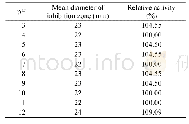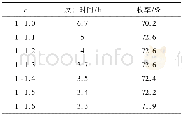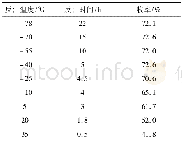《Table 3 Effect of methyl palmitate on the decomposition of cellulose, hemicellulose and lignin》
 提示:宽带有限、当前游客访问压缩模式
提示:宽带有限、当前游客访问压缩模式
本系列图表出处文件名:随高清版一同展现
《Study on Co-refining of Poplar Powder with Soybean Oil in Supercritical Methanol》
1) Reaction conditions covered a dosage of cellulose,hemicellulose or lignin equating to 10.0 g,a methanol dosage of 80.0 g,a reaction temperature of 320°C,and a reaction time of 1.0 h.2) Reaction conditions covered a dosage of cellulose,hemicellulos
The main components of poplar powder(lignocellulosic biomass)included cellulose,hemicellulose and lignin[10,17].The effect of methyl palmitate(reagent-grade)on the decomposition of these three kinds of compounds was studied in this work,with the results shown in Table 3.It can be seen from Table 3 that when the compounds were directly liquefied in supercritical methanol,the decomposition rate decreased in the following order:hemicellulose>cellulose>>lignin.If methyl palmitate was added to the reaction system,the decomposition rate of these three samples mentioned above all improved.The relative decomposition rate of hemicelluloses,cellulose and lignin was improved by 11.2%,18.9%and 25.0%,respectively.That is obvious to say,for the three kinds of compounds,the more difficult the liquefaction,the greater the magnitude of the decomposition rate increase.It was reported[7]that the most difficult to be liquefied and decomposed was lignin upon being subject to high-pressure liquefaction.But it can be seen from the results of this study that the decomposition rate of lignin was significantly improved in the biomass co-refining,which was favorable to further research on the industrial application of biomass liquefaction.
| 图表编号 | XD0011295000 严禁用于非法目的 |
|---|---|
| 绘制时间 | 2018.03.30 |
| 作者 | Hu Jianbo、Du Zexue |
| 绘制单位 | SINOPEC Research Institute of Petroleum Processing、SINOPEC Research Institute of Petroleum Processing |
| 更多格式 | 高清、无水印(增值服务) |





